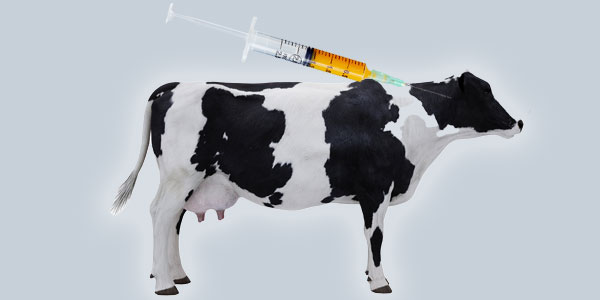The antibiotic bully in your beef
- Shaun Smillie
The use of antibiotics in livestock threatens public health, the environment, and food security. Researchers explore plants as an alternative.

Antimicrobial resistance (AMR) occurs where bacteria, viruses, fungi, and parasites no longer respond to medicines, making infections harder to treat. It’s a growing threat that’s on the radar of the World Health Organization (WHO).
In 2019, 1.27 million people worldwide died from AMR, according to the US Centers for Disease Control and Prevention, while another five million deaths associated with AMR were caused, in part, by antibiotics fed to livestock that end up on the tables of consumers across the globe.
AMR is set to claim even more lives in the future – by 2050, ten million fatalities annually are forecast, a figure higher than the 8.4 million deaths from cancer that occur every year. As AMR takes hold, common diseases that include respiratory tract infections, sexually transmitted diseases, and urinary tract illness will become untreatable.
Furthermore, the WHO estimates that, by 2030, AMR will force up to 24 million people into extreme poverty and has warned that lifesaving medical procedures would become riskier, and food systems increasingly precarious.
Potentially fatal priority pathogens
To combat this plague, governments and health organisations have embarked on an ‘arms race’ to develop new antibiotics to fight antibiotic-resistant ‘priority pathogens.’ In 2017, the WHO published a list of these priority pathogens, which were given the acronym?ESKAPE. They include?Enterococcus faecium, Staphylococcus aureus, Klebsiella pneumoniae, Acinetobacter baumannii, Pseudomonas aeruginosa, and Enterobacter species. These are the pathogens that represent the greatest threat to humans and whose rise is in part linked to the practice of using antibiotics in food production.
Associate Professor Eliton Chivandi, Associate Professor Kennedy H. Erlwanger, and Dr Michael Madziva are researchers in the Endocrinology and Metabolism Research Laboratory in the Wits School of Physiology. They explain that low doses of antibiotics are given to livestock to suppress the growth of microbiota that use up nutrients meant for the animal. The problem with this practice is that these synthetic antibiotics are the same, or similar, to those used in humans.
“Research has shown an explicit relationship between antimicrobial use and antimicrobial resistance in veterinary science,” says Chivandi. The use of these antibiotics has been found to cause kidney, liver and pancreatic toxicity in both livestock and in the humans that consumed those animal products.
“Some of the antibiotics also cause allergic reactions, immuno-suppression and reproductive failure,” adds Madziva. As more and more antibiotics are used in livestock and make their way into livestock products like eggs and meat, the greater the negative impact on consumer health.
Furthermore, the continued use of antibiotics to promote growth in livestock increases the chances of the transfer of antibiotic resistant genes to humans, which will further exacerbate the challenge to public health in the future.
“Additionally, and most important, the antibiotics expelled in livestock waste contaminate the physical environment leading to even further development of antibiotic resistance in the environment,” says Erlwanger.
However, there is potentially a safer alternative that these researchers are exploring: Phytochemicals. And humans have known about them for millennia.
Fighting AMR with phytochemicals
Phytochemicals are what plants use to protect themselves not only from browsing animals, but also from bacteria, protozoa, and viruses. They are known as metabolites and examples of these are tannins in tea, and flavonoids, a group of natural substances found in fruit and vegetables. Flavonoids are known for their anti-cancer, antioxidant, anti-inflammatory, and antiviral properties.
For centuries humans have known that some phytochemicals have medicinal properties.?A well-known example is salicin which, for at least 2400 years, has been used to treat headaches. Salicin is found in the bark of the white willow tree and the compound is known for its anti-inflammatory and pain-relieving properties.
By the end of the 19th century, salicin was being synthetically produced and used in the manufacture of aspirin. It is only recently, however, that science has been studying purified phytochemicals to determine the efficacy and possible toxicity of the compounds. While much of the work on phytochemicals is still in the research phase, increasingly they are being seen as a safer alternative to antibiotics as growth promoters.
“In recent years there has been a dramatic increase in the use of phytochemicals, nutraceuticals and other dietary products to support health and wellness and to treat illnesses,” says Erlwanger. Examples of these include coumarins, flavones, isoflavones and tannins, which are being used in food supplements to promote health.
But the trio believe that more research is needed not only to evaluate the efficacy of phytochemicals but also to determine their safety when it comes to the health of consumers and farmed animals. Then comes the task of getting the agricultural industry to accept the use of phytochemicals. This can be done through educational campaigns and more research.
“The clarion call by consumers of livestock and poultry derived foods is to replace synthetic antibiotics with natural products that mimic the biological effects of synthetic antibiotics,” concludes Chivandi.
- Shaun Smillie is a freelance writer.
- This article first appeared in?Curiosity,?a research magazine produced by?Wits Communications?and the?Research Office.
- Read more in the 16th issue, themed: #Drugs, where we highlight the diversity, scope, and multi-dimensional nature of drug-related research at Wits University.
